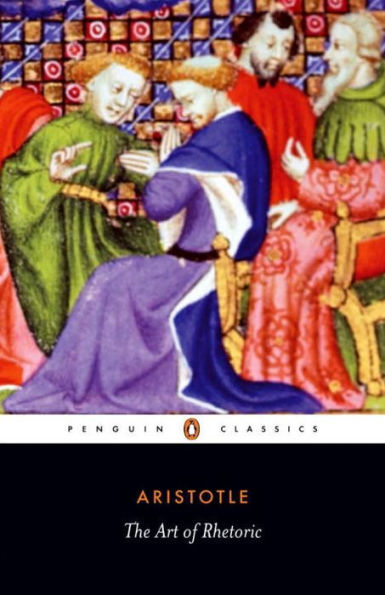With the emergence of democracy in the city-state of Athens in the years around 460 BC, public speaking became an essential skill for politicians in the Assemblies and Councils - and even for ordinary citizens in the courts of law. In response, the technique of rhetoric rapidly developed, bringing virtuoso performances and a host of practical manuals for the layman. While many of these were little more than collections of debaters' tricks, the Art of Rhetoric held a far deeper purpose. Here Aristotle establishes the methods of informal reasoning, provides the first aesthetic evaluation of prose style and offers detailed observations on character and the emotions. Hugely influential upon later Western culture, the Art of Rhetoric is a fascinating consideration of the force of persuasion and sophistry, and a compelling guide to the principles behind oratorical skill.
For more than seventy years, Penguin has been the leading publisher of classic literature in the English-speaking world. With more than 1,700 titles, Penguin Classics represents a global bookshelf of the best works throughout history and across genres and disciplines. Readers trust the series to provide authoritative texts enhanced by introductions and notes by distinguished scholars and contemporary authors, as well as up-to-date translations by award-winning translators.
With the emergence of democracy in the city-state of Athens in the years around 460 BC, public speaking became an essential skill for politicians in the Assemblies and Councils - and even for ordinary citizens in the courts of law. In response, the technique of rhetoric rapidly developed, bringing virtuoso performances and a host of practical manuals for the layman. While many of these were little more than collections of debaters' tricks, the Art of Rhetoric held a far deeper purpose. Here Aristotle establishes the methods of informal reasoning, provides the first aesthetic evaluation of prose style and offers detailed observations on character and the emotions. Hugely influential upon later Western culture, the Art of Rhetoric is a fascinating consideration of the force of persuasion and sophistry, and a compelling guide to the principles behind oratorical skill.
For more than seventy years, Penguin has been the leading publisher of classic literature in the English-speaking world. With more than 1,700 titles, Penguin Classics represents a global bookshelf of the best works throughout history and across genres and disciplines. Readers trust the series to provide authoritative texts enhanced by introductions and notes by distinguished scholars and contemporary authors, as well as up-to-date translations by award-winning translators.

The Art of Rhetoric
304
The Art of Rhetoric
304Paperback(Reissue)
Related collections and offers

Product Details
| ISBN-13: | 9780140445107 |
|---|---|
| Publisher: | Penguin Publishing Group |
| Publication date: | 03/03/1992 |
| Series: | Penguin Classics Series |
| Edition description: | Reissue |
| Pages: | 304 |
| Sales rank: | 87,154 |
| Product dimensions: | 5.10(w) x 7.75(h) x 0.70(d) |
| Age Range: | 18 Years |
About the Author
Customer Reviews
Explore More Items
At first glance, Three Lives seems to be three straightforward portraits of women living in the early twentieth century. “The Good Anna” describes an exacting German house servant;
By pairing translations of Gorgias and Rhetoric, along with an outstanding introductory essay, Joe Sachs demonstrates Aristotles response to Plato. If in the Gorgias Plato
The Theaetetus is a philosophical work written by Plato in the early-middle 4th century BCE that investigates the nature of knowledge, and is considered one of the founding works of epistemology.
A translation with introduction and commentary of Plato's Phaedo. This celebrated dialogue describes the last conversations in prison
